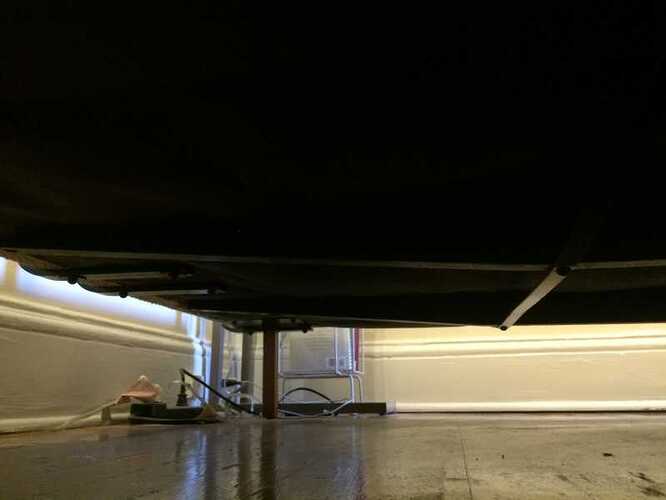Hi, I live in Washington, DC and inherited a danish modern platform bed from my great aunt and uncle. It’s beautiful, maybe an Ohlsson Danish Mid Century Modern bed for Dux, but I’m beginning to think it’s painful… and I can’t give it up. It is our primary bed with a split headboard that has independent swiveling tufted headboards and 4 wooden legs that attach into wrought iron square holes. The mattress we have sits flush (not inset) on the frame, which is exactly full size and consists of a fabric wrapped 2 inch border (that the legs also attach into via wrought iron) and instead of wooden slates running horizontally, there are two wrought iron convex bars that run underneath and one vertical convex wrought iron bar that runs the length in the middle. Those live underneath a thin stretched fabric material. This means that the mattress is supported on the 2 inch hard border “frame” and the middle becomes hammock/trampoline-like.
My husband and I are primarily side sleepers and sometimes back. I am 5 feet tall and 122 pounds, he is 5’6" and 120 pounds. Small people! We have the cheapest mattress discounters full size mattress (coil) sitting alone on the frame. It was originally my own mattress and is about 7 years old. My lower back recently started hurting and his has been hurting for a few months. I have always been a sound and solid sleeper but have been waking up multiple times a night because my hip or shoulder will start hurting. Sometimes, my husband finds sleeping on the floor on two camping mats more comfortable. Yikes! Not what we want. We want our bed to be a place we don’t want to move from!
We are wondering how this can all be remedied without ridding ourselves of the vintage frame. Should we replace the mattress (if so, what kind - we mistake plush for not firm), purchase a bunkie board first (if so, what kind), or both… or something else? So many thanks, in advance.
I should also add that I’ve been researching latex beds but they seem too heavy for this frame. I’ve also been looking at euro-tops. My husband sleeps a warm.





